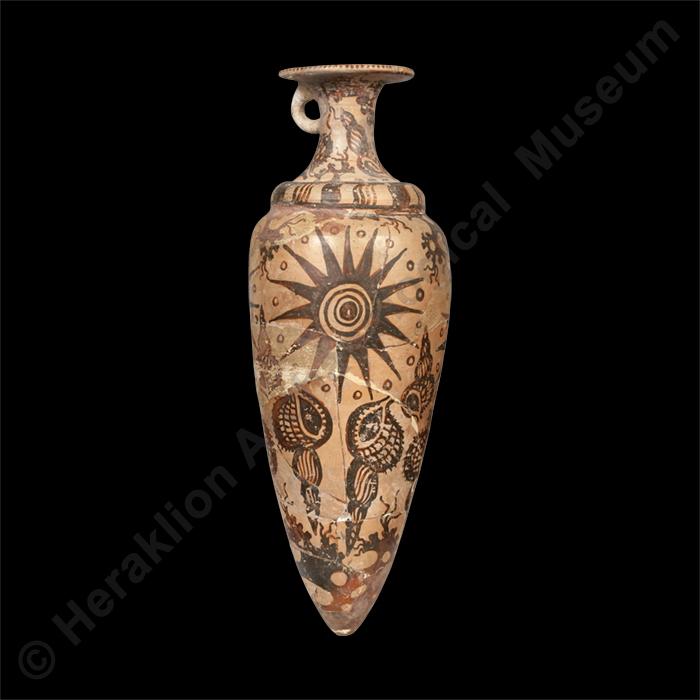Clay Marine Style rhyton
Π2085
Clay
Incomplete, mended and restored.
Height: 32 cm.
Zakros
Hogarth's House Α
Late Bronze Age. Neopalatial period, Late Minoan ΙB period.:
1500-1450 BC:
Gallery:
IVCase:
43Exhibition thematic unit:
Late Bronze Age - Neopalatial period (1700-1450 BC). The New Palaces. The zenith of Minoan civilisationPalace of Zakros
Description
The shape of the ovoid rhyton evolved in the Late Minoan IB period, becoming a slenderer variant of the earlier types imitating ostrich eggs. The relief collar at the join of neck and body may be due to the influence of metal prototypes. Ovoid rhyta were used to decant liquids, probably by dipping the rhyton into the liquid and stopping the hole in the tip. However, some rhyta, like this example from Zakros, with characteristic decoration in the Marine Style, were also used in rituals as libation vessels, often in pairs. This use is deduced from the decorative themes, which in the case of the Marine Style have symbolic connotations, and also often from where they are found, in storage spaces for ritual equipment in palaces and villas. The rhyton from Zakros is decorated with free-floating tritons, starfish, corals and seaweed, in a composition that is skilfully adapted to the surface of the vase, giving an impression of balanced asymmetry.Bibliography:
Hogarth, D.G. "Bronze Age vases from Zakros". Journal of Hellenic Studies 22 (1902): 333-5, pl. 12. Mountjoy, P.A. “Attributions in the LM IB Marine Style.” American Journal of Archaeology 81 (1977): 559-60, fig. 2. Mountjoy, P.A. “The Marine Style Pottery of LM IB/LH IIA: Towards a Corpus”. Annual of the British School at Athens 79 (1984): 197 (Zakros 10), pl. 24g. Koehl, R.B. Aegean Bronze Age Rhyta. INSTAP Prehistory Monographs 19. Philadelphia, Penn., 2006, 108, no. 241.Author:
I. N.Photographs' metadata
